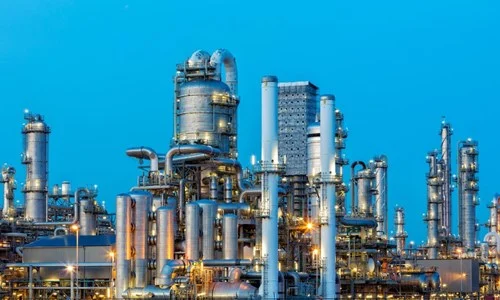Mini Refineries Risk Closure Over Profit Concerns …C0NTINUE READING HERE >>>
Smaller refineries, especially in Africa, would soon witness downward return on investment as a new generation of mega refineries comes online and China’s powerhouse economy falters.
Earnings from turning crude oil into petroleum products have softened this year, driving refineries in some parts of the world to cut production.
Lacklustre demand growth, largely reflecting China’s economic torpor, is a big part of the story but there’s also a structural element surging capacity.
A host of new facilities from the Middle East to Africa, Latin America and Asia, including several giant plants, have commenced operations and with maintenance that was delayed by both COVID-19 and the war in Ukraine now completed, refiners’ profits dipped sharply in the most recent quarter.
It’s back to what was normal before all these exceptional years, chief executive officer of TotalEnergies SE, Europe’s largest refiner, Patrick Pouyanne said, during an earnings call late last month, ‘Refiners know they have to come back to reality and to deliver good results with lower margins.’
The new plants are helping to drive a reversal of the boom that was spurred by the mothballing of capacity during the pandemic, the later resurgence in demand, and then Russia’s invasion of Ukraine and its rupturing of fuel markets.
Globally, refineries will process about 900,000 barrels a day more crude this year than they did last, according to International Energy Agency calculations.The additions include two sites with the capacity to transform local economies, as well as the oil market.
The 650,000 barrel-a-day Dangote plant in Nigeria will make the country a major fuel producer once it is fully operational.
After several delays, Mexico’s Dos Bocas plant is set to reach full capacity of 340,000 barrels a day this month as the country seeks to become energy independent.
There’s also China’s Shandong Yulong refinery, which is poised to begin trial runs later in the year, following multiple delays, as well as Oman’s Duqm plant that ramped up in recent months.
Vitol Group, the world’s largest independent oil trader, said, last month, that global refinery runs will reach an all-time high later this year. That followed some additions in 2023, as Kuwait’s giant Al-Zour refinery began operating in earnest.
The US increased its own processing capacity by 270,000 barrels a day, partially restoring some of the volume that was shut in the pandemic.
There are limits to how far margins are likely to slide though.
A decline in earnings lowers the incentive for a plant to function at full throttle, potentially tightening supply.
In China, run rates among private refineries in Shandong province have dipped to 48 per cent, near the lowest since March 2020, partly due to softer demand for fuels such as gasoline and diesel.
In the longer-term, older plants are due to shut, particularly in Europe. And summer in the Northern Hemisphere also brings disruption risks, from high temperatures to hurricanes in the Atlantic that have the potential to churn through to the refining hub on the US Gulf Coast.
We’ve seen some economic run cuts outside the country and in the summertime, you are going to lose some utilisation, president and chief executive officer of PBF Energy Inc., a US refiner, Matthew Lucey, said in an earnings call.
The industry’s fault lines have shown in company earnings.
Chevron Corp. missed estimates largely on weaker refining. France’s TotalEnergies also fell short of estimates as a result of weakness in its refining business. Phillips 66 revised down its estimates for utilisation rates and will bring forward planned maintenance.
“It’s fair to say that we have seen in essence normalisation of prices and margins across the energy system back down to pre-2022 levels,” Wael Sawan, chief executive officer of Shell Plc said in a Bloomberg TV interview.
>
